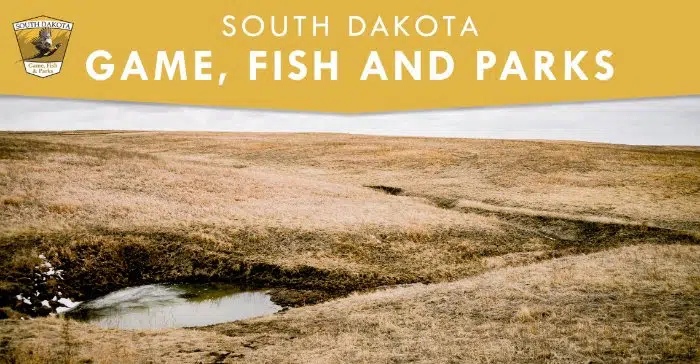
PIERRE, S.D. –The South Dakota Game, Fish and Parks (GFP) is asking hunters going into the field this fall to be diligent in preventing and detecting fires under the extreme dry conditions in certain parts of the state.
Tom Kirschenmann, director for the Division of Wildlife, stressed that hunters are helpful in preventing and catching fires early. “Hunters are among our very best fire-prevention tools,” he added. “With their precautions, thoughtful actions and diligence in watching the horizon, we have extra sets of eyes in the field that are valuable in preventing and reporting wildfires.”
Hunters are an active part of fire prevention by preparing for and observing the following:
Carry a phone with a list of emergency contact numbers.
Know where cell service is available or not available.
Be aware of private landowners’ concerns about wildfires, and carefully follow restrictions that landowners place on hunters.
Restrict driving to established roads and trails.
Park vehicles in designated areas away from tall vegetation.
Ensure that catalytic converters and mufflers are in good repair.
Walk into hunting areas and walk out, including retrieval of game, whenever possible.
Camp only in designated areas and restrict the use of campfires.
Keep water, a bucket, shovel and other firefighting equipment in your vehicle.
Hunt in the early morning when high humidity reduces fire danger.
“The key to fire safety is awareness,” concluded Kirschenmann. “We ask that hunters use common sense and be aware of the potential for wildfires no matter what the conditions are each fall. Responsible actions can make a difference in protecting both property and wildlife habitat.”
Landowners and Hunters Asked to Report Dead Deer
PIERRE, S.D. – South Dakota Game, Fish and Parks has documented the first deer mortalities in 2020 due to hemorrhagic disease, also known as epizootic hemorrhagic disease (EHD) or blue tongue. EHD was recently confirmed by laboratory analysis in deer from Hughes and Sully counties.
This disease is common in white-tailed deer and is typically detected in late summer or early fall. Minor deer losses to EHD can occur in any given year in South Dakota, but weather and habitat conditions will dictate the severity of the disease. EHD is not infectious to humans. For more information on the EHD virus visit gfp.sd.gov/epizootic-hemorrhagic-disease.
The virus is spread by a biting midge and causes extensive internal hemorrhaging in infected animals. Many deer exhibit no clinical signs and appear perfectly healthy, while others may have symptoms such as respiratory distress, fever, and swelling of the tongue. With highly lethal strains of the virus, deer can be dead within 1-3 days. Affected deer are often found near low lying areas or water, likely due to the deer attempting to combat the high fever.
With fall approaching, landowners and hunters will be in the field and may encounter such mortalities. GFP asks anyone who observes sick deer or finds several dead deer in a localized area to contact their local conservation officer or GFP office . This information is valuable to wildlife managers in monitoring deer populations across the state.
EHD outbreaks can be locally severe, but rarely affect a high proportion of the deer population in a management unit. In 2016, the disease affected deer populations in certain areas of eastern South Dakota and license adjustments were made in some management units to react to these unforeseen mortality events. Deer can continue to succumb to this disease until a hard freeze reduces the midge populations that carry the disease.




Comments